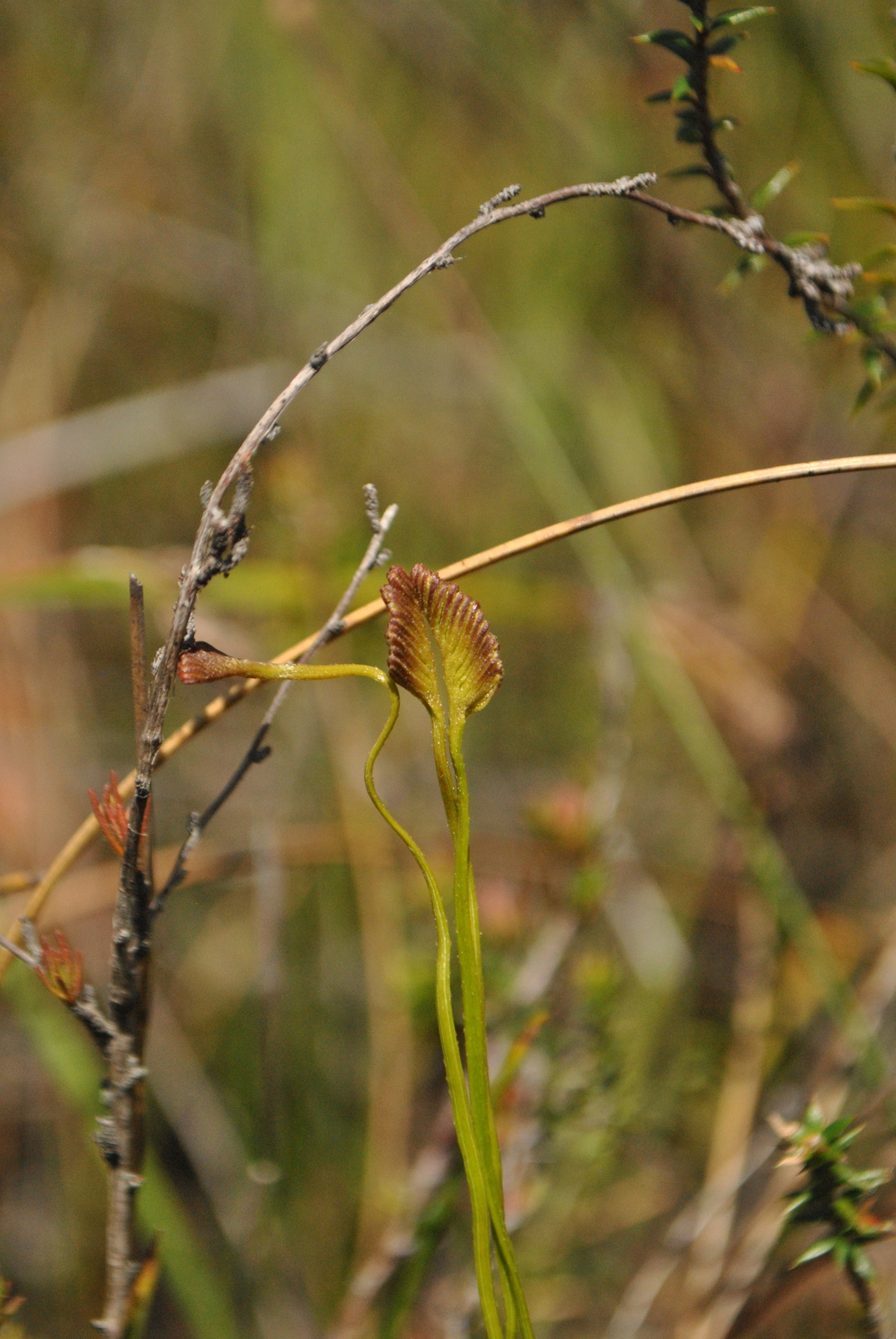Schizaea bifida
Willd. Forked Comb-fernRhizome buried to depth of c. 5–8 cm. Fronds very close together, tufted, erect, stiff, unbranched or forked 1–several times, 8–40 cm long, linear and narrow, 0.6–1.2 mm diam.; stipe brown and terete near base then green and somewhat flattened; lamina hardly distinct from stipe, flattened, angular, with two grooves containing stomata on pinnae side and a broad depression on back of comb, green, smooth to rough, with scattered colourless hairs when young and usually with scattered, tiny, forward-pointing spinules. Sterile fronds short and unbranched, or fan-like, forked several to many times, or absent. Fertile fronds with fewer divisions and only up to 6 final branches; combs 10–18 mm long, 5–9 mm wide, 2–2.5 times longer than broad; pinnae bearing sporangia with almost smooth margins bearing numerous long, fine hairs.
GleP, VVP, GipP, OtP, WaP, CVU, GGr, DunT, EGL, EGU, WPro, HSF, OtR, Strz, MonT, VAlp. Also SA, Qld, NSW, Tas. (including Bass Strait islands). New Zealand. In heathland or on bare gravelly sites, largely coextensive with the other Schizaea species.
Although S. bifida can usually be distinguished from S. fistulosa by its stouter combs, intermediate (or immature) specimens can be readily separated by examining the fertile pinnae margins with a hand lens: S. fistulosa has ragged, narrow, forward pointed lobes, while S. bifida has a more or less smooth margin with numerous fine, long hairs. Specimens with branched sterile fronds were previously regarded as a separate species S. asperula. Schizaea dichotoma (L.) Sm., reported from coastal NSW and the northern parts of Australia (as well as outside Australia), can be difficult to distinguish from S. bifida. Characteristically, the sterile fronds of S. dichotoma are repeatedly forked above the middle resulting in a fan-like structure.
Entwisle, T.J. (1994). Ferns and allied plants (Psilophyta, Lycopodiophyta, Polypodiophyta). In: Walsh, N.G.; Entwisle, T.J., Flora of Victoria Vol. 2, Ferns and Allied Plants, Conifers and Monocotyledons, pp. 13–111. Inkata Press, Melbourne.
 Spinning
Spinning



